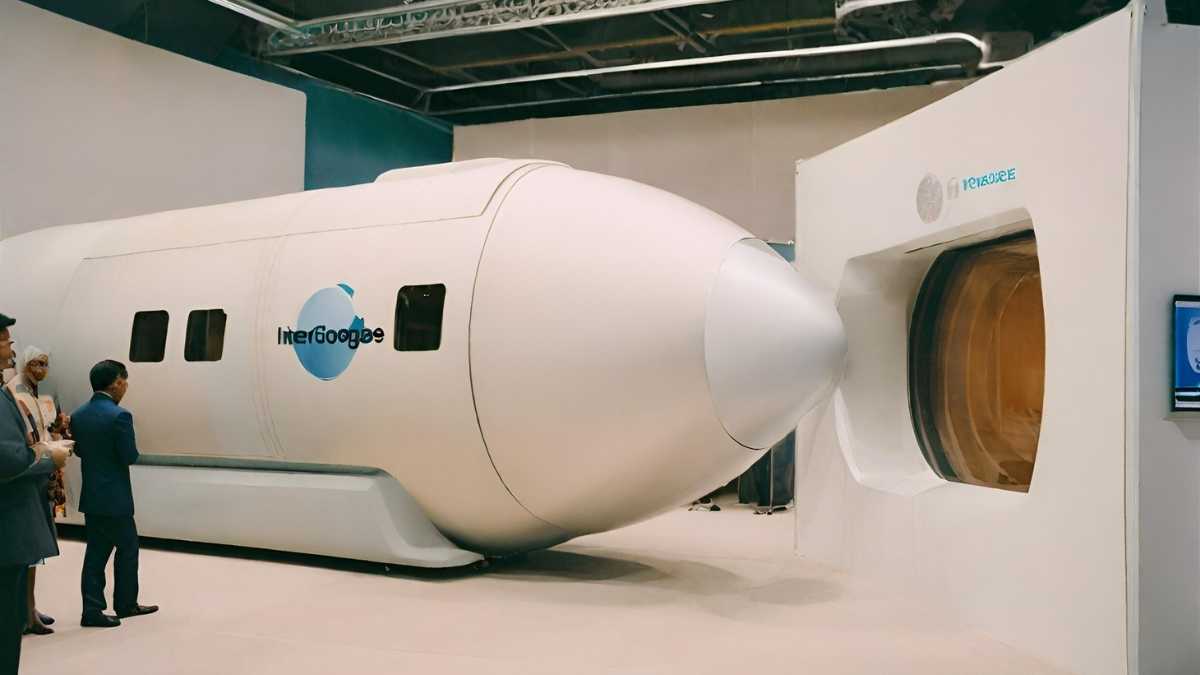Granular Recovery Technology (GRT) allows for the restoration of individual files from a larger backup. It provides file-level recovery from full-system backups without restoring the entire system.
As businesses amass vast quantities of data, GRT emerges as a critical tool in data management and disaster recovery strategies. This technology streamlines the recovery process, significantly reducing downtime and improving operational efficiency. By enabling the precise extraction of specific data elements, GRT spares IT professionals from the arduous task of complete system restores when only a handful of files are needed.
Not only does this enhance the flexibility and speed of recovery operations, but it also minimizes bandwidth usage during these processes, making it an invaluable asset for organizations looking to maintain seamless access to critical data.

Credit: fastercapital.com
Introduction To Granular Recovery Technology
Welcome to the insightful world of Granular Recovery Technology (GRT), where data recovery is not just a necessity, but a craft. Picture an intricate mosaic where every tiny piece is critical. That’s the essence of GRT. It’s the difference between salvaging a masterpiece and losing valuable fragments. Let’s unveil the magic behind this advanced technology.
The Evolution Of Data Recovery
Back in the day, data loss meant waving goodbye to entire sets of digital information. But tech wizards have been hard at work. Through the years, they brought us the gift of Granular Recovery Technology, a game-changer in the data rescue arena. Just as humans evolved from simple to complex beings, data recovery has morphed from a blanket approach to a precise science. GRT stands tall as the latest landmark in this evolution.
Defining Granularity In Data Management
Ever wonder why granola bars are so satisfying? It’s the blend of assorted bits offering a full experience. Similarly, granularity in data management refers to the detail level within a set of data. Think zooming in with a microscope, seeing data’s finer details. With GRT, data isn’t just a blob of information, but a collection of individual, selectable pieces. This selective approach transforms data restoration, shifting the power to your fingertips.

Credit: www.linkedin.com
Key Components Of Granular Recovery
Understanding Granular Recovery Technology (GRT) begins by diving into its core components. These vital parts work together to ensure that recovering specific pieces of data is both quick and fail-safe. Granularity refers to the level of detail; the finer the granularity, the more precise the recovery. Let’s explore the key components that make granular recovery not just possible, but efficient.
The Role Of Metadata
Metadata is the DNA of data recovery. It’s the detailed information that describes what data is and where to find it. Imagine sifting through a library without a catalog – that’s data recovery without metadata. With GRT, metadata is meticulously cataloged to enable the restoration of individual files, mailboxes, or documents without the need to restore entire systems first. This translates to streamlined recovery processes saving time and resources.
Indexing Data For Recovery Efficiency
Just as a book index enables you to pinpoint the exact page you need, data indexing in GRT allows for precise recovery. This component is all about mapping the data landscape efficiently. When data is indexed, recovery solutions can quickly locate and restore individual items from vast data pools.
Indexing complements metadata by not only knowing the whereabouts of data but also allowing for its quick retrieval. This component is essential for businesses to meet strict timeframes during data recovery scenarios.
- Makes data searches faster
- Enables precise item restoration
- Cuts down on recovery times
- Essential for business continuity
Benefits Of Granular Recovery In Data Restoration

Imagine a tool that lets you pick out a single pearl from a necklace rather than having to untangle the entire strand. That’s the power of Granular Recovery Technology in the realm of data restoration. It’s a targeted approach that addresses specific needs, ensuring that critical operations continue without unnecessary interruptions. Let’s dive into the benefits of granular recovery for businesses and IT professionals.
Enhancing Operational Continuity
Business operations hinge on data availability. Downtime means lost opportunities and revenue. Granular Recovery Technology (GRT) is here to enhance operational continuity. Here’s how:
- Minimal downtime: GRT enables quick recovery of essential data.
- Efficient processes: No need to restore entire systems for single files.
- Cost-effective: Reduces the need for extensive resources during recovery.
Selective Data Restoration Capabilities
Selectivity is the cornerstone of GRT. You get the choice to restore exactly what you need. For instance:
| Without GRT | With GRT |
|---|---|
| Restore Full Database | Restore Specific Email |
| Time-consuming | Fast and Precise |
| Complete System Overhaul | Individual File Recovery |
This selective approach means you can recover only what’s missing or corrupted. It also translates to:
- Restoring data without affecting unaffected areas.
- Recovering files for regulatory or compliance needs swiftly.
- Limiting access to sensitive data during the restoration process.
Application Scenarios For Granular Recovery
An essential tool in data management is Granular Recovery Technology (GRT). It allows for the precise recovery of specific data components. This is vital for businesses that rely on quick data retrieval. Let’s explore the scenarios where GRT can be particularly beneficial.
Disaster Recovery And Business Impact
Data loss can halt business operations. Natural disasters, system failures, or human errors can cause such loss. GRT steps in here. It aids in the quick restoration of critical data which reduces downtime. Key areas include:
- Quick file or email retrieval
- Restoration of individual database records
- Minimizing the impact on business continuity
Time saved translates into money saved. This helps maintain business reputation and customer trust.
Compliance And Regulatory Considerations
Organizations often face strict data regulations. GRT makes compliance simpler. It provides:
- Precision in data recovery
- Control over data retrieval
- Protection against data tampering
These factors are vital for organizations handling sensitive information.
Challenges And Considerations
Granular Recovery Technology (GRT) offers precision in data recovery, allowing users to restore individual items from a backup. Yet, this innovative approach is not without its challenges and considerations.
Technical Limitations And Dependencies
GRT systems hinge on specific conditions to ensure flawless performance. Here’s an outline of some technical restrictions and dependencies to keep in mind:
- Compatibility: Check if your backup software aligns with GRT
- Software dependencies: Additional plugins may be necessary for full-function
- Processing power: Granularity requires robust processing
These aspects underscore the necessity for careful planning and assessment prior to integrating GRT into your system.
Security Implications Of Granular Data Access
While granular access proves beneficial, it raises important security questions.
| Security Aspect | Implication |
|---|---|
| User Permissions | Strict control is mandatory to avoid unauthorized access |
| Data Sensitivity | Recovery operations must respect data privacy regulations |
Implementing robust security protocols ensures that GRT empowers users without compromising data integrity.
The Future Of Granular Recovery Technology
Imagine a world where data recovery is not just efficient, but nearly instant. This is the exciting future of Granular Recovery Technology (GRT). As we look ahead, GRT is set to revolutionize how we handle data restoration. The future points towards greater precision, speed, and integration with cutting-edge tech. GRT is crucial in our data-driven age. Its evolution is something to watch closely.
Granular Recovery Technology is on a path to meld seamlessly with new tech trends. Here’s what to anticipate:
- Artificial Intelligence: GRT will harness AI to improve data restoration accuracy.
- Cloud Computing: As more data migrates to the cloud, GRT will adapt to offer cloud-specific solutions.
- Internet of Things (IoT): GRT poised to ensure quick restoration of IoT device data.
Data recovery is changing. Here’s a glimpse into its future:
- GRT will provide real-time recovery, reducing downtime significantly.
- Advancements in GRT could lead to automatic error rectification in systems.
- More users will have the power of self-service recovery, leading to less dependence on IT support.

Credit: medium.com
Frequently Asked Questions For What Is Granular Recovery Technology?
What Are The Benefits Of Backup Granularity?
Backup granularity offers targeted restoration, reduces storage space by allowing specific data selection, and speeds up both backup and recovery processes.
What Is Grt Backup?
GRT backup, or Granular Recovery Technology backup, allows for the restoration of individual items from a complete backup without restoring the entire dataset.
What Is Recovery In Data Mining?
Recovery in data mining refers to the process of restoring lost or corrupted data from backups or through algorithms designed to reconstruct missing information. This ensures data integrity and continuity in data analysis.
What Is Granular Recovery Technology (grt)?
Granular Recovery Technology allows for the recovery of individual files, folders, and data items from a single backup. It eliminates the need to restore full systems for small data recoveries, thus saving time.
Conclusion
Granular Recovery Technology (GRT) is reshaping data restoration, offering precision and efficiency. It’s a vital tool for businesses seeking targeted backup solutions. Embrace GRT for its convenience and cost-effective data management. It empowers swift recoveries and ensures operational continuity. Explore GRT to secure your valuable data today.



